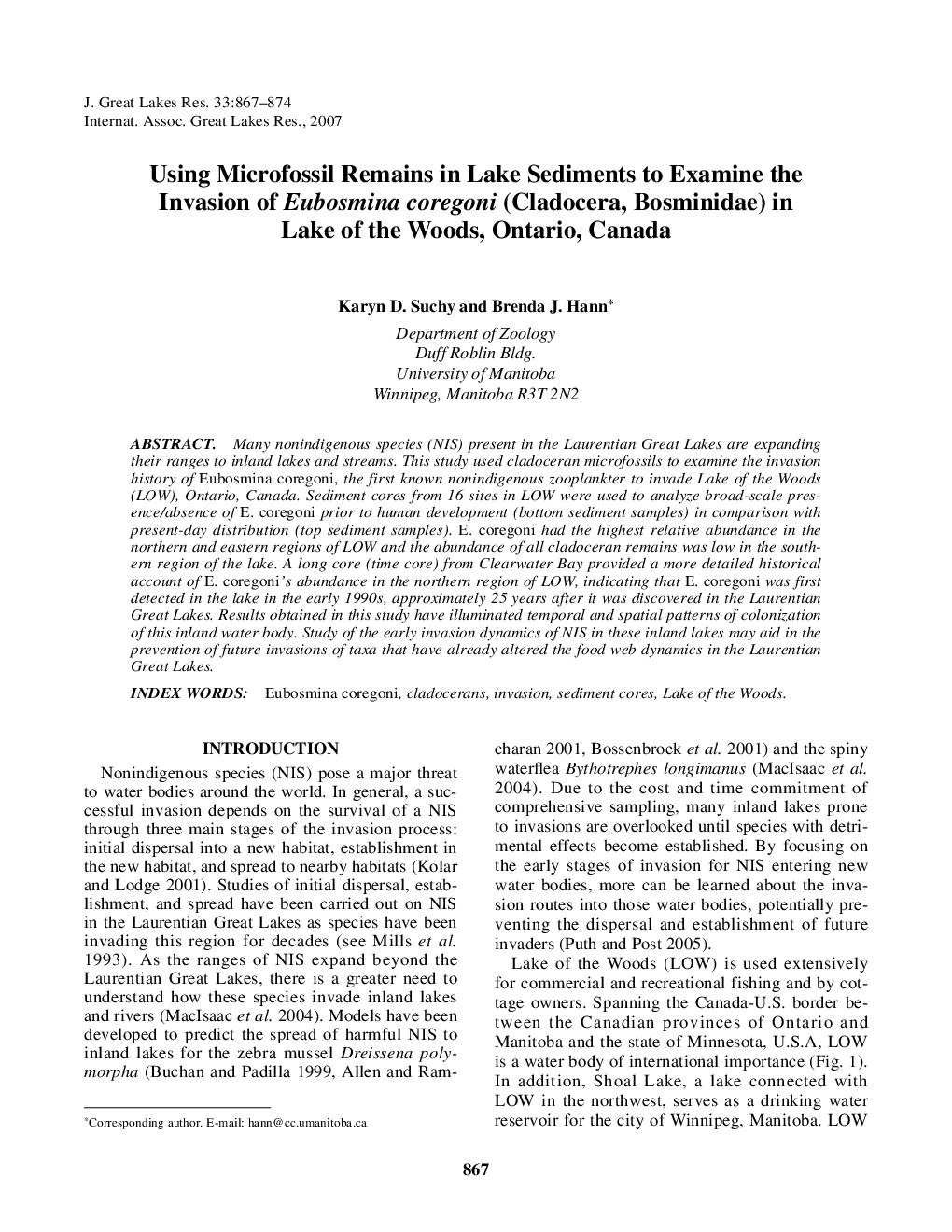| Article ID | Journal | Published Year | Pages | File Type |
|---|---|---|---|---|
| 4399229 | Journal of Great Lakes Research | 2007 | 8 Pages |
Abstract
Many nonindigenous species (NIS) present in the Laurentian Great Lakes are expanding their ranges to inland lakes and streams. This study used cladoceran microfossils to examine the invasion history of Eubosmina coregoni, the first known nonindigenous zooplankter to invade Lake of the Woods (LOW), Ontario, Canada. Sediment cores from 16 sites in LOW were used to analyze broad-scale presence/absence of E. coregoni prior to human development (bottom sediment samples) in comparison with present-day distribution (top sediment samples). E. coregoni had the highest relative abundance in the northern and eastern regions of LOW and the abundance of all cladoceran remains was low in the southern region of the lake. A long core (time core) from Clearwater Bay provided a more detailed historical account of E. coregoni's abundance in the northern region of LOW, indicating that E. coregoni was first detected in the lake in the early 1990s, approximately 25 years after it was discovered in the Laurentian Great Lakes. Results obtained in this study have illuminated temporal and spatial patterns of colonization of this inland water body. Study of the early invasion dynamics of NIS in these inland lakes may aid in the prevention of future invasions of taxa that have already altered the food web dynamics in the Laurentian Great Lakes.
Related Topics
Physical Sciences and Engineering
Earth and Planetary Sciences
Earth and Planetary Sciences (General)
Authors
Karyn D. Suchy, Brenda J. Hann,
